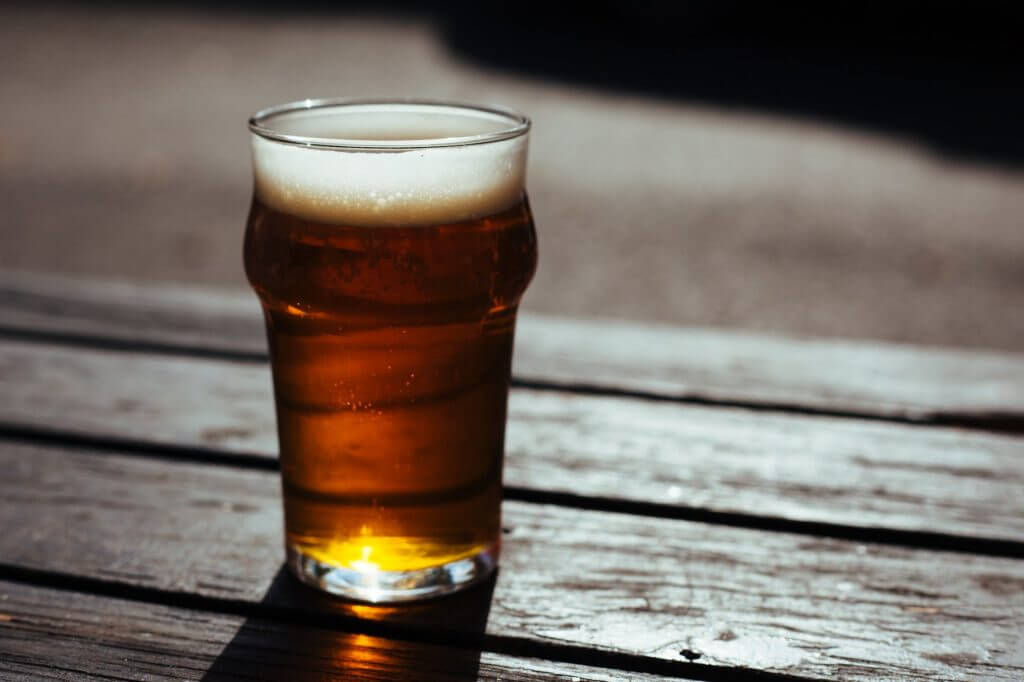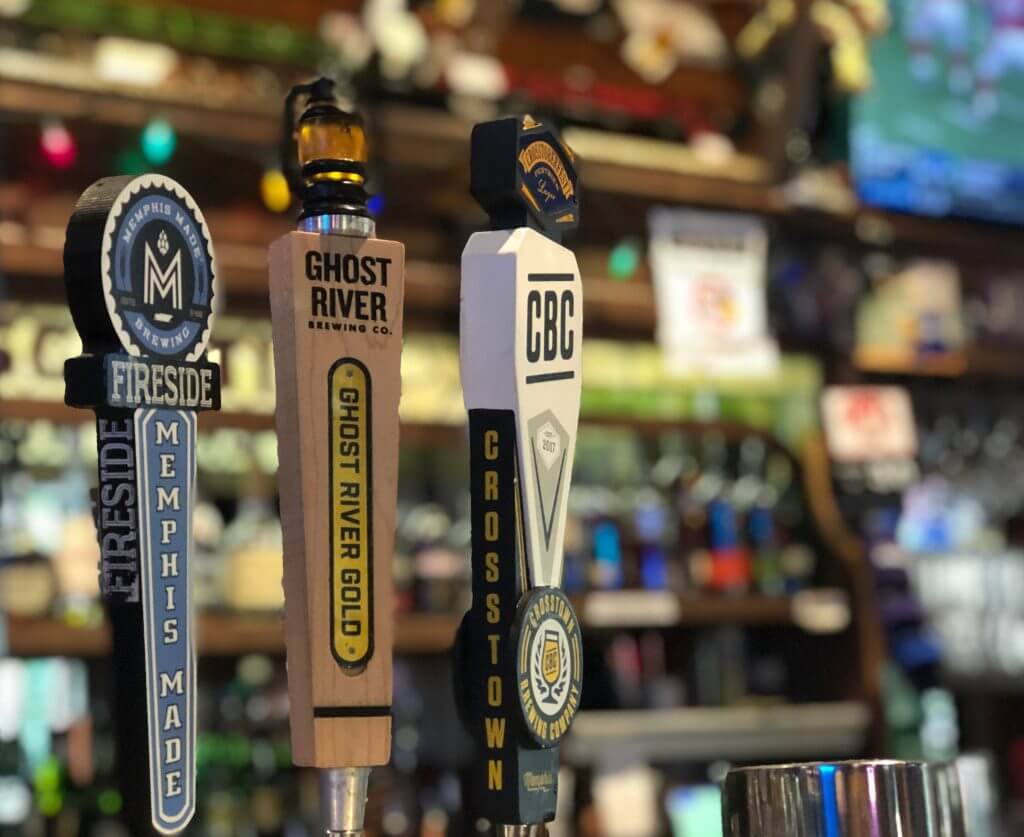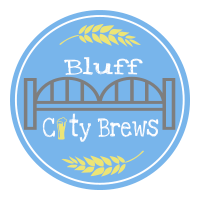It seems like varieties of beer are a dime a dozen. Stepping into the grocery store, liquor store, or craft brewery, you’re faced with an onslaught of different options. You may know of a few of them, and you can describe the flavor of your favorites, but when it comes down to it, what exactly distinguishes all these different brews? More and more people acquire a taste for craft beer every year, and who can blame them? Knowing that craft beer is undergoing such a surge in popularity, it comes as no surprise craft breweries are popping up everywhere!
With this in-depth look at the types of beer you’re likely to encounter, you can have a better understanding of what goes into your favorite drink, and you may even find some new varieties to sample!
Before going through the different types of beer, let’s first determine what beer is. Generally, beer is made up of:
Yeast
Yeast activates the fermentation process. Different varieties of beer use different strains of yeast, and this affects the flavor and alcohol percentage of the beer.
Malt
After soaking a grain until it germinates, brewers are left with their malt. The malt is broken down by the yeast, slowly being converted to alcohol. Barley is the most utilized malt, but buckwheat, rice, oats, corn, wheat, and most other germinating grains can be used. Naturally, the choice of malt will affect the flavor, aroma, and texture of the finished product.
Hops
The flower of Humulus Lupulus — the common hop — is added in the brewing process to add that classic bitterness that beer drinkers know and love. There are a ton of different types of hops, and each type has its own specific qualities that contribute to the flavor and bitterness of the beer they’re used for.
Water
It wouldn’t be so easy to guzzle your favorite brew if it were solid, but there’s more to the inclusion of water than just that. The flavor of water varies widely between different areas, and this is because of the minerals and other elements that find their way into a water supply. Naturally, that flavor will carry over to the finished product, so the choice of water is very crucial to the brewing process. Usually, brewers will use distilled water, as it’s the closes thing to pure, unadulterated water on the market, but there are exceptions.
Herbs, spices, and other ingredients
Brewers aren’t only limited to yeast, malts, hops, and water. Many ingredients can be added to beer at various stages of fermentation to affect the flavor. Fruits, citrus peels, spices, minerals, syrups, and many other components can augment the taste of a beer.
Beer Types

With that basic rundown out of the way, let’s go into the two major types of beer: ales and lagers.
Ales
Top-fermenting strains of yeast are used in the production of ales, and fermentation occurs between 55 and 77 degrees Fahrenheit. Ales tend to have a fuller taste, and more hops are used in the brewing process, leading to greater bitterness than a lager. Many types of ale have a citrus flavor from the hops and other ingredients used in their production.
Lagers
Brewed at a low temperature and using bottom-fermenting yeast, these beers are known for their light, refreshing quality. They’re made with milder hops, so lagers aren’t very bitter. They have a smooth flavor, making them a great drink on a hot summer day!
Beer Styles

American Blonde Ale
Quick Facts
ABV: 4% – 5.5%
Color: Pale to Deep Gold
Local Example(s): Crosstown Siren, Meddlesome Brass Bellows
Known as the gateway beer within the craft beer industry, the American Blonde Ale is neither too hoppy nor too malty. Malts and hops are generally low to moderate, as well as its ABV. However, the lager-like crispness and refreshing qualities of the American Blonde Ale makes it a fantastic starter beer for those that typically don’t care to drink beer or have just got started.
American Cream Ale
Quick Facts
ABV: 4% – 6%
Color: Pale to Light Gold
Local Example(s): Ghost River Grindhouse, Memphis Made Junt
Cream ales are very light. Their bitterness is more akin to that of a lager than an ale, due to the lager brewing style that’s used to create this one-of-a-kind gem. Known for being moderately malted and hopped, it’s one step up from the American Blonde Ale, but packs every bit of punch with its crisp and refreshing lager-style features.
American Sours
Quick Facts
ABV: Varies
Color: Varies
Local Example(s): Meddlesome Sour Malone, Ghost River Razzle Dazzle
American sours are brewed with wild yeast in a more traditional or rustic way. As the name suggests, these beers can be pretty sour. This is due to abundance of natural acids that are release through the fermentation process. It’s often difficult to replicate the flavor of any individual sour, as they rely on the yeast that occurs naturally in the air. There is an element of randomness in the production of sours, so American sours can take on a number of colors.
American Wheat Ale
Quick Facts
ABV: 5% – 7%
Color: Golden to Brown, Usually Cloudy
Local Example(s): Memphis Made 3:30 on a Wednesday, Ghost River Lost Hive, Meddlesome Water Malone
These beers mostly use wheat as a malt, though most of the time, this is combined with some amount of barley or other malts. American Wheat Ales typically have a wide range of flavors, thanks to the different types of grain flavors found across the U.S. Hops are modestly added in and produce a nice, crisp finish to the beer. Even though American Wheat Ales typically have a golden color, they can vary between a golden yellow and ruby brown, depending on if a pale or dark version has been crafted.
Belgian Pale Ale
Quick Facts
ABV: 6.5%- 7.5%
Color: Light Yellow to Amber
Local Example(s): Wiseacre Azazel 2014
Belgian pale ales utilize aged hops in the brewing process, trading some of the bitterness of typical ales for a more malty taste. When you take a sip, you’ll notice a rich array of flavors in your mouth, typically including earth, citrus, and spiciness. The high carbonation of the beer typically leaves this beer with a fine, dry finish.
Belgian Dark Ale
Quick Facts
ABV: 4% – 7%
Color: Amber to Brown
Local Example(s): Memphis Made Lights Out, Meddlesome Devil’s Water
When it comes to Belgian Dark Ales, they tend to have a thicker, fruitier, and malty taste. Flavor can vary, as well as the bitterness. Depending on the brewery, styles of this ale typically range from malty and fruity to hoppy and dry, or a combination of the two.
Berliner Weisse
Quick Facts
ABV: 3.5% – 5%
Color: Light Yellow to Amber
Local Example(s): Wiseacre The Beach Within Reach
Utilizing German wheat and Pilser malts, this type of beer is fermented with yeast and Lactobacillus- a bacteria that makes this delicacy a tad bit on the sour side. They’re lightly malty and sometimes take on vibrant colors if fruits or flavorings are added in the brewing process.
Black Lager
Quick Facts
ABV: 4% – 6%
Color: Dark Brown to Black
Local Example(s): Wiseacre Starless, Meddlesome Burn the Witch
As the name suggests, this beer is very dark in color. The flavor is quite malty; however, it’s not very heavy or overwhelming- usually light in body with roasty dark notes. These beers have a slight bitter taste due to the amount of hops used during their production, but they still provide a pleasant, refreshing and relatively light experience to the beer drinker.
Bock
Quick Facts
ABV: 5.5% – 7.5%
Color: Amber to Rich Brown
Local Example(s): Tennessee Brewing Co. Goldcrest 51 Beer
Bocks are like the bigger, tougher brother of the black lager. They’re usually a shade of brown with a possible amber hue. Very few hops are used in their production, so a thick malt flavor (that’s not overly sweet) is the characteristic of these beers.
Brown Ale
Quick Facts
ABV: 4% – 7%
Color: Light to Dark Brown
Local Example(s): Wiseacre Neon Brown, Boscos Midtown Brown
Darker than their pale cousins due to the use of malts, brown ales typically have a malt-forward taste with hops peeking through a little aggressively, thanks to the hop-loving American palate. Even though most American Brown Ales can typically be bitter, notes of toast, chocolate, coffee, and caramel can be tasted in the background. A great beer to have on a dark, foggy day.
Doppelbock
Quick Facts
ABV: 7% – 11%
Color: Deep Gold to Dark Brown
Local Example(s): Crosstown Tator, Wiseacre Ameliorator, High Cotton Doppelbock
Known to be a hearty, power-packing beer, the Doppelbock is a “double” Bock that brings more flavor and strength to the table with each passing sip. Lightly brewed Doppelbocks are created with Munich and Pilsner malts, while the darker versions are typically made with Munich and Vienna malts. While the lighter versions could showcase a little of the hops, neither the light or dark versions showcase a “hoppy” beer. The hops are there for balance, while the malts bring about a lingering sweetness that showcase caramel, toffee, raisins, and chocolate notes (depending on which side of the fence you sit).
India Pale Ale
Quick Facts
ABV: 6% – 10%
Color: Pale Gold to Amber
Local Example(s): Crosstown Traffic, Wiseacre Ananda, Meddlesome 201 Hoplar, Ghost River Zippin Pippin, Boscos Bombay IPA
Usually abbreviated to IPA, India Pale Ales are currently one of the most popular craft beer varieties on the market. They’re brewed with a heavy emphasis on hops. Those who love bitterness won’t be disappointed. Citrus, fruits, and other ingredients are added to make individual IPAs stand out, and flavor can vary widely because of this.
Oktoberfest
Quick Facts
ABV: 5% -6.5%
Color: Bronze to Dark Amber
Local Example(s): Wiseacre Oktoberfest, Ghost River Oktoberfest, Meddlesome Patio Perfect
Starting back in Germany in the early 1900s, Oktoberfest beers were brewed in the last brewing month of the year before refrigeration- March. These beers were then preserved in cold caves until the month of October, where they were celebrated and consumed in large quantities. Celebrations for this beer have continued on across the years, as well as internationally. However, one can taste the difference in an Oktoberfest beer due to its maltiness and robust flavors that usually end in a refreshingly dry finish.
Pale Ale
Quick Facts
ABV: 4% – 6%
Color: Pale Yellow to Amber
Local Example(s): Wiseacre Regular, Crosstown Ocansey, Ghost River The Queen’s Rosemary Pale
Pale ales, while hoppy, tend to be less bitter than IPA-style beers. For beginner beer drinkers, this style beer is the gateway to IPAs. The hops are perfectly balanced with malts; however, the hops showcase themselves very subtly throughout the mixture. Known to be a versatile beer, this a great beginner beer for those wanting to experiment new arenas, as well as mix their drink and food options.
Pilsner
Quick Facts
ABV: 4.5% – 6%
Color: Pale Yellow to Light Gold
Local Example(s): Wiseacre Tiny Bomb, Crosstown Terraplane, Ghost River Prestige, Meddlesome Dad Jeans
First brewed in the region of the Czech Republic, these light-colored beers are known for their soft malt flavor, subtle earthy tones, and a bit of spicy, floral hops- perfectly balanced. Finished with a nice bitterness that’s more embracing than aggressive, this is the perfect beer to have all throughout the year.
Red Ale
Quick Facts
ABV: 4.5% – 7%
Color: Light to Dark Amber
Local Example(s): Ghost River Riverbank Red, Memphis Made Fireside
Due to the roasted malts used in their production, red ales have a very distinct flavor. They can be described as savory with a toasty to caramelly taste that has a nice dry finish. Since this beer style leans towards the use of specialty malts, the color typically produced is a ruddier, red shade.
Stout
Quick Facts
ABV: 4% – 7%
Color: Dark Brown to Black
Local Example(s): Wiseacre Gotta Get Up to Get Down, Meddlesome Black Cat Moan, Crosstown Spacebird
The word “Stout” emerged as a way to showcase a beer that was stronger than the average porter. Exploring depth thanks to the use of roasted barley, this beautiful beer style has become its own with a variety of flavors, hop intensity, and alcohol content being used. Whether it’s the traditional, oatmeal, or milk stout you’ve come across, rest assure you’ve found a gem that’s going to be packed full of flavor, has a nice creamy texture, and a subtle dry finish.
